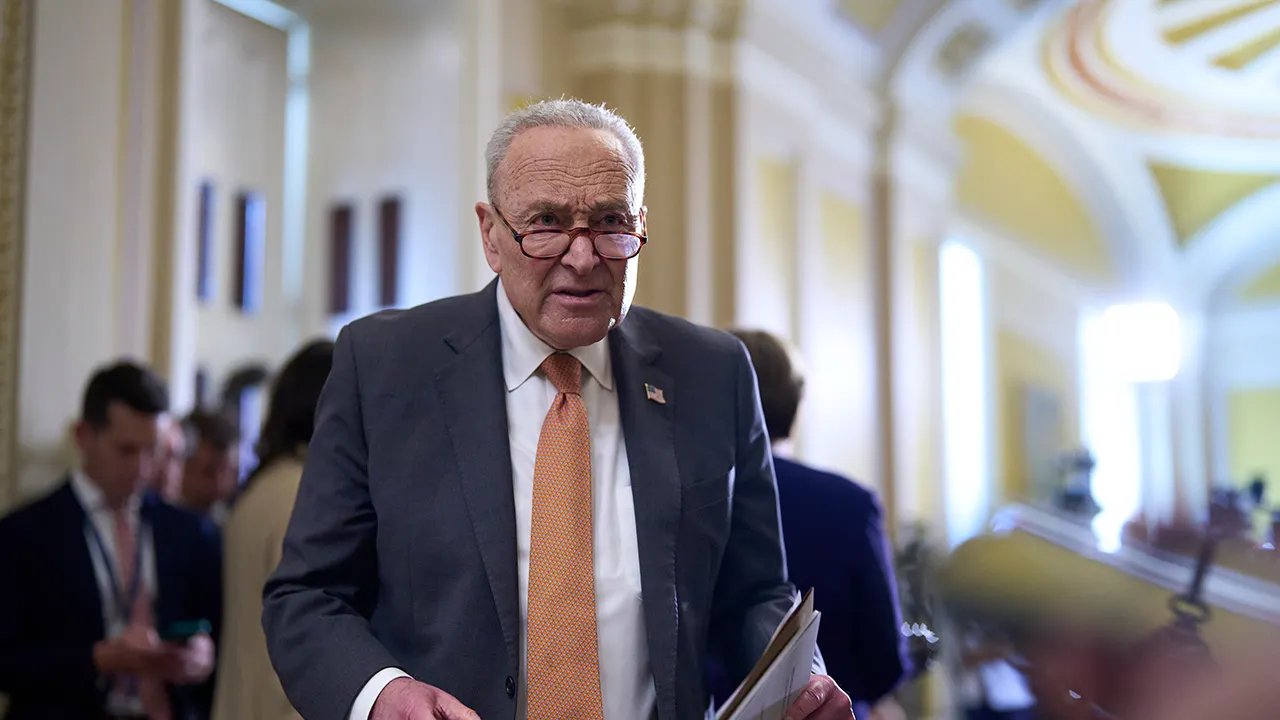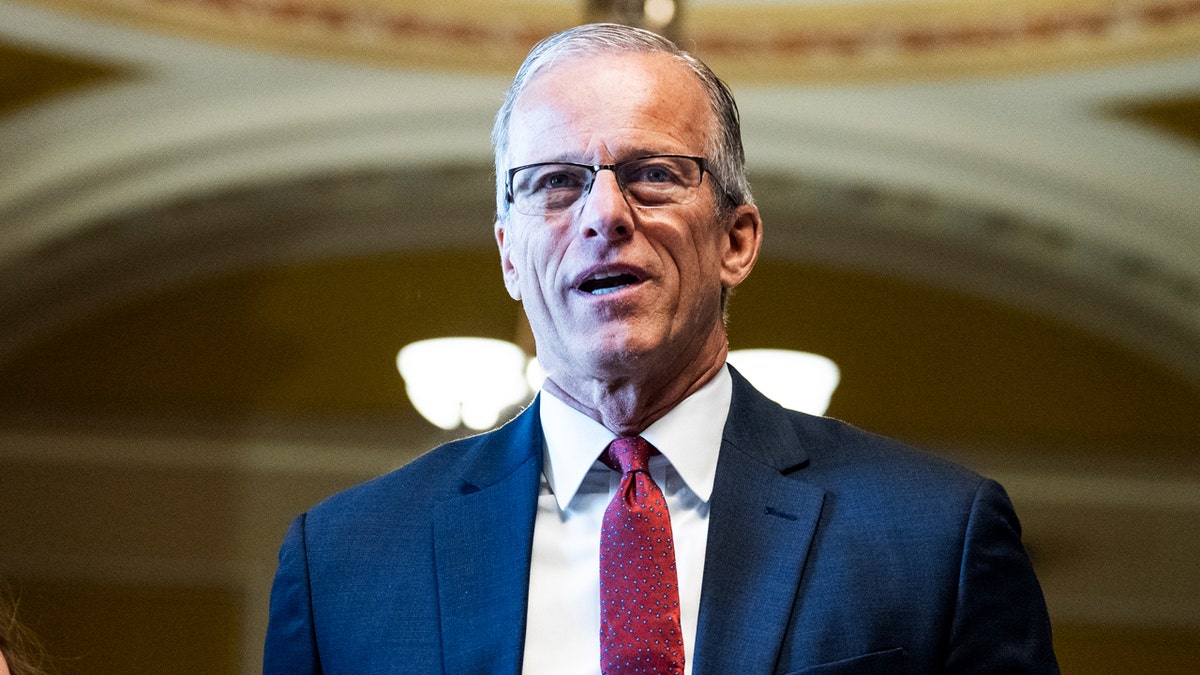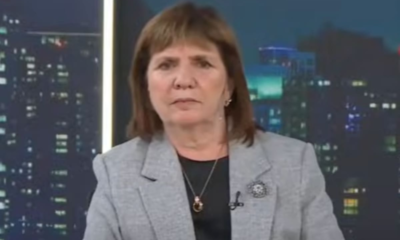INTERNACIONAL
Un nuevo dato preocupa a los investigadores del accidente del avión de Air India: por qué el sistema de emergencia se desplegó antes del impacto

El accidente del vuelo 171 de Air India en Ahmedabad sacudió al mundo entero, dejando una estela de interrogantes técnicos y humanos. Con al menos 270 víctimas mortales y un único sobreviviente, el siniestro se ha convertido en el primer accidente fatal de un Boeing 787 Dreamliner desde su entrada en servicio en 2011.
Minutos después del despegue, el vuelo activó un sistema de emergencia diseñado para lo impensable: un doble fallo de motores. Se trata de la Ram Air Turbine o RAT, una pequeña hélice que se despliega desde el fuselaje cuando el avión pierde su fuente principal de energía.
Según fuentes citadas por The Wall Street Journal, la RAT estaba en funcionamiento cuando el avión, un Boeing 787 Dreamliner, cayó estrepitosamente 50 segundos después del despegue. Esto podría significar que los motores no estaban generando electricidad ni presión hidráulica suficientes, lo que apunta a un fallo crítico y simultáneo de los sistemas principales.
La Ram Air Turbine (RAT) es una de las últimas líneas de defensa en la aviación comercial. Se trata de una pequeña turbina eólica ubicada en el vientre del avión que se despliega automáticamente cuando fallan ambos motores o se pierden las tres fuentes de presión hidráulica, condiciones consideradas de emergencia total. Según el manual del Boeing 787, también puede activarse si los instrumentos de cabina pierden energía o si hay fallos en las bombas eléctricas del sistema hidráulico.

El hecho de que la RAT estuviera activa en el vuelo AI171 al momento del accidente, según personas familiarizadas con la investigación, sugiere una pérdida significativa de potencia en el avión. En vuelos comerciales modernos, una doble falla de motores es extremadamente rara. “Nuestros motores hoy son más eficientes y confiables que nunca”, señaló el consultor de seguridad aeronáutica estadounidense Anthony Brickhouse, citado por el WSJ.
Entre las posibles causas se incluyen impactos de aves, errores de combustible o fallos mecánicos graves. Sin embargo, en este caso, el avión despegó en condiciones meteorológicas claras y alcanzó apenas 190 metros de altitud antes de dejar de transmitir señales, según datos de Flightradar24. Esto ocurrió apenas 50 segundos después del despegue, tras lo cual se recibió una señal de mayday. No hubo más comunicación con la cabina.
El hecho de que la RAT estuviera activa implica que los sistemas primarios fallaron o se degradaron de forma crítica. Los investigadores ahora deben determinar si se trató de un fallo simultáneo de ambos motores, una pérdida de energía eléctrica por otra causa, o una falla hidráulica.
El análisis de las cajas negras, que aún no ha sido confirmado por las autoridades, será clave para establecer la secuencia precisa de eventos.

El sistema puede activarse si la presión de los tres sistemas hidráulicos del avión cae demasiado, o cuando los instrumentos del cockpit pierden potencia por completo debido a alguna anomalía con las bombas eléctricas de los motores. Existe la posibilidad también de que los pilotos decidan activar la RAT manualmente si consideran que los sistemas principales han dejado de ser suficientes para garantizar el control total de la aeronave.
La RAT, aunque de menor capacidad que los generadores convencionales, permite conservar el mínimo indispensable para operar el avión y emprender maniobras de emergencia, incluida la posibilidad de intentar un aterrizaje controlado.

El proceso de investigación sobre el vuelo 171 sigue su curso, bajo el Ministerio de Aviación Civil de la India. En las etapas iniciales, los esfuerzos se han enfocado en determinar las causas que llevaron a la activación del sistema RAT y la posible pérdida de empuje de los motores. Sin embargo, los investigadores aún no han logrado establecer con certeza si la emergencia fue provocada por fallas técnicas, causas hidráulicas, problemas en la cabina o una combinación de varios factores.
Igualmente, hasta ahora, no se confirmó de manera oficial cuál fue el origen exacto del incidente, y los expertos insisten en la importancia de obtener y analizar los datos de las cajas negras. La falta de respuesta de la cabina tras la llamada de socorro y la breve altitud alcanzada antes de que el avión dejara de transmitir datos alimentan la hipótesis de una emergencia aguda y repentina asociada a pérdida de potencia.
Las autoridades recalcan que las investigaciones de accidentes aéreos pueden durar un año o más, ya que buscan comprender en profundidad todos los elementos que intervinieron en el siniestro. Los análisis suelen arrojar múltiples factores contribuyentes, entre ellos posibles errores de tripulación, fallas de mantenimiento, defectos de diseño o circunstancias externas imprevisibles.
Asia / Pacific,Ahmedabad
INTERNACIONAL
Schumer, Democrats try to save face, blame GOP for possible government shutdown

NEWYou can now listen to Fox News articles!
Congressional Democrats are trying to get on the same page and display a unified front after threatening to derail the government funding process.
Senate Minority Leader Chuck Schumer, D-N.Y., and House Minority Leader Hakeem Jeffries, D-N.Y., met behind closed doors Tuesday night, along with the top Democrats in the House and Senate Appropriations Committees, to plot a course forward in the forthcoming government funding fight.
SENATE WEATHERS DEM OPPOSITION, ADVANCES FIRST GOVERNMENT FUNDING BILL
Senate Minority Leader Chuck Schumer, D-N.Y., turns to an aide during a news conference at the Capitol in Washington, D.C., on June 3, 2025. (AP Photo/J. Scott Applewhite)
The meeting came after Democrats in the upper chamber overwhelmingly supported the first government funding bill to hit the Senate floor, one that would fund military construction and Veterans Affairs. Ahead of the vote, Senate Democrats had signaled they may vote against the bill and further obstruct the appropriations process because of highly partisan legislation rammed through the upper chamber by Senate Republicans.
«We all want to pursue a bipartisan, bicameral appropriations process,» Schumer said. «That’s how it’s always been done, successfully, and we believe that, however, the Republicans are making it extremely difficult to do that.»
The meeting just off the Senate floor was meant to get congressional Democrats on board with a messaging plan over the next weeks and months ahead of the Sept. 30 deadline to fund the government.
CONGRESSIONAL REPUBLICANS FACE BRUISING BATTLE TO AVOID GOVERNMENT SHUTDOWN

Senate Majority Leader John Thune, R-S.D., is seen after the Senate luncheons in the U.S. Capitol on June 24, 2025. (Tom Williams/CQ-Roll Call, Inc via Getty Images)
It was also likely designed to prevent a repeat of the Democratic debacle in March, when Schumer broke with Jeffries and threatened to shutter the government before ultimately caving and providing Republicans the votes necessary to advance yet another government funding extension, known as a continuing resolution.
Republicans are quick to point out that when Schumer led the upper chamber, none of the House GOP’s spending bills made it to the floor — in Congress, the spending process begins in the lower chamber.
Since taking over earlier this year, Senate Majority Leader John Thune, R-S.D., has committed to returning to regular order, or passing each of the dozen spending bills to fund the government, and trying to get the appropriations process back to normal.
However, it’s a feat that hasn’t been successfully done in Washington since the late 1990s.
«Frankly, I think a lot of us around here think [this] is long overdue,» Thune said.
However, Democrats contend that their trust in Republicans is wearing thin after two major partisan bills, one being President Donald Trump’s «big, beautiful bill,» and the other the president’s $9 billion clawback package, were pushed through the chamber without any Democratic input.
‘BAIT AND SWITCH’: SCHUMER WARNS OF BITTER FUNDING FIGHT OVER GOP CUTS PLAN

Representative Hakeem Jeffries, a Democrat from New York, speaks during a news conference at the U.S. Capitol in Washington, D.C., on Feb. 6, 2025. (Tierney L. Cross/Bloomberg via Getty Images)
Thune argued that Senate Democrats were using the rescissions package to shut down the appropriations process and effectively shut down the government.
In the Senate, most bills that come to the floor require at least 60 votes to smash through the filibuster, meaning that most legislation requires bipartisan support to some extent.
Earlier this year, the House GOP produced a partisan government funding extension that was a tough pill for Senate Democrats to swallow, but they still ultimately opted to vote for it. This time around, they’re demanding more involvement in the process.
CLICK HERE TO GET THE FOX NEWS APP
Jeffries said that congressional Democrats would play ball if the process was «bipartisan and bicameral in nature» and put the onus of a partial government shutdown at the feet of congressional Republicans.
«House Republicans are, in fact, marching us toward a possible government shutdown that will hurt the American people,» he said.
However, House Speaker Mike Johnson, R-La., threw the responsibility on Democrats over whether the government would shutter or stay open come the end of September.
«They’re gaming out how they can shut the government down,» Johnson told Bloomberg Government.
INTERNACIONAL
Ucrania: el presidente Volodimir Zelenski enfrenta críticas y protestas por una nueva ley anticorrupción

Advertencia de funcionarios de la UE
Negociaciones en Estambul
Ucrania,Volodímir Zelenski,Rusia,Guerra Rusia-Ucrania
INTERNACIONAL
Trump admin official to meet with Israel, Qatar amid push for Gaza ceasefire

NEWYou can now listen to Fox News articles!
Special Envoy Steve Witkoff is expected to meet with Israeli and Qatari officials in Rome on Thursday as the U.S. pushes for a ceasefire deal in Gaza.
Hamas and Israel are engaging in indirect negotiations to end the war that has raged on for nearly two years. However, Witkoff’s itinerary depends on the progress made in the talks. If the parties make enough progress in Rome, Witkoff will reportedly travel to Doha to finalize the deal, according to Axios.
The outlet also reported that sources indicated the meeting in Rome could suggest that a deal is near — possibly just days away.
Earlier this month, Israel agreed to a U.S.-backed, 60-day ceasefire proposal that would lead to the end of the war. This deal includes a phased release of hostages, the withdrawal of Israeli troops from parts of Gaza and talks on ending the conflict, according to Reuters.
Special Envoy Steve Witkoff is expected to meet with Israeli and Qatari officials in Rome on Thursday to secure a deal to end the war in Gaza. (Dawoud Abo Alkas/Anadolu/Kevin Dietsch/Getty Images)
ISRAEL, HAMAS TALKS DRAG AS AID GROUP CHAIR TELLS UN TO STOP ACTING LIKE THE ‘MAFIA’
«My representatives had a long and productive meeting with the Israelis today on Gaza. Israel has agreed to the necessary conditions to finalize the 60 Day CEASEFIRE, during which time we will work with all parties to end the war. The Qataris and Egyptians, who have worked very hard to help bring peace, will deliver this final proposal. I hope, for the good of the Middle East, that Hamas takes this deal because it will not get better — IT WILL ONLY GET WORSE,» President Donald Trump wrote on Truth Social on July 1.

President Donald Trump holds a bilateral dinner with Israeli Prime Minister Benjamin Netanyahu, with Defense Secretary Pete Hegseth and Secretary of State Marco Rubio in attendance, at the White House in Washington, D.C., July 7, 2025. (REUTERS/Kevin Lamarque)
ISRAEL ACCEPTS TRUMP-LED CEASEFIRE PLAN THAT COULD END GAZA WAR WITHIN 60 DAYS
Trump appeared optimistic about the possibility of Israel and Hamas reaching a deal to end the war. On July 16, while signing the HALT Fentanyl Act, Trump thanked Witkoff, praising him for doing «a fantastic job» and said that there was «some good news on Gaza,» though he did not elaborate.

From left to right, Foreign Affairs Minister of Bahrain Abdullatif bin Rashid Al Zayani, Prime Minister of Israel Benjamin Netanyahu, President Donald Trump and Foreign Affairs Minister of the United Arab Emirates Abdullah bin Zayed bin Sultan Al Nahyan participate in the signing ceremony of the Abraham Accords on the South Lawn of the White House on Sept. 15, 2020, in Washington, D.C. (Photo by Alex Wong/Getty Images)
TRUMP PRESSURES ISRAEL TO END GAZA CONFLICT AS HE EYES ABRAHAM ACCORDS EXPANSION
If Trump can secure an end to the war, it could mean an expansion of the Abraham Accords, one of the signature efforts of Trump’s first administration, which saw Israel sign normalization agreements with the United Arab Emirates, Bahrain, Morocco and Sudan. However, Trump has yet to detail which countries would be added.
Israeli Minister of Foreign Affairs Gideon Sa’ar said on June 30 that Israel was «serious» about seeking an end to the conflict. He added that Jerusalem has an interest in «countries, such as Syria and Lebanon, our neighbors, to the circle of peace and normalization.»
CLICK HERE TO GET THE FOX NEWS APP
Fox News Digital’s Greg Wehner and Caitlin McFall contributed to this report.

 POLITICA3 días ago
POLITICA3 días agoExpulsada del Gobierno, Victoria Villarruel empieza a tomar distancia, pero no tiene proyecto político para este año

 POLITICA3 días ago
POLITICA3 días agoLa CGT evalúa adelantar a octubre el recambio de sus autoridades y define una movilización contra Milei

 POLITICA2 días ago
POLITICA2 días ago🗳️ El chamuyo de las elecciones en la Provincia: se postulan, pero no a asumen



































